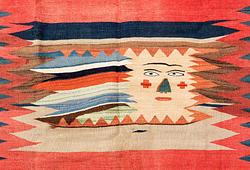Empire
SPEGEL, empire, etikettmärkt Jon Frisks spegel-fabrik, Stockholm 1810-20-tal.
Frisks etikett bär adressen Riddarhustorget Huset n:7, Stockholm där spegelfabrikation pågick 1814-24.
Rektangulär spegel med rakt krön, lunett med pastellagedekor av parställda delfiner och palmett. Tudelat glas. Ramen med dekor av vinranka. Bredd 77, höjd 161 cm.
Slitage, smärre dekorlagningar, obetydliga skador, renoverad med senare förgyllning och bronsering. Nedre glas sentida.
Designer
The Empire style lasted roughly between 1810 and 1840 and is primarily considered an interior design style. The style is characterised splendor and pomp and is sometime known as imperial. The French empire is often associated with Napoleon Bonaparte of France who was highly interested in ancient Rome and its attributes. Egyptian elements with sphinxes, palmettes, eagles, griffins, and masks were common as decorative elements. The most common wood was mahogny and burnished gilding was popular. Chiffonier were popular furniture items during the empire and seated durnitres were dressed in light, bright colours. The 1830-40s is known as the Late Empire and was more bourgeois. In Germany and Austria, the style was known as biedermeier and was identified by furniture with softer lined made out of birch. The Empire style came to Sweden with Jean Baptiste Bernadotte (King Karl XIV Johan) afterwhich was known as "Karl Johan". The Swedish style was lighter and less majestic.
Read more




































